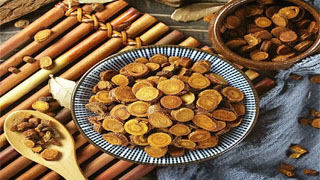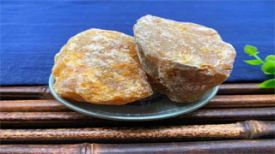
1. Aliases
Roast grass.2. Plant morphology
Perennial herb, 30-100cm tall. The roots and rhizomes are thick and robust, with a reddish brown skin. The stem is upright and woody, with some colored short hairs and spiky glands. Odd pinnate compound leaves with a length of 8-20cm; Leaves 7-17, ovate or broadly ovate, 2-5cm long and 1-3cnl wide, acute or blunt at the apex, rounded at the base. Both sides are covered with short hairs and glands; Stipules broadly lanceolate, covered with white cilia. Racemes axillary, with dense flowers; Calyx bell shaped, calyx teeth 5, lanceolate, with short hairs and prickly glandular structures on the outside; The corolla is blue purple, 1.4-2.5cm long, hairless, with a large oval flag petal and claws. The keel petal is straight and shorter than the wing petal, with long claws; Stamen diosome, (9+1). The pods are linear, curved in a sickle or circular shape, and are densely covered with prickly hairy glands on the outside. Seeds 4-8, renal shaped. The flowering period is from July to August, and the fruiting period is from August to September.
3. Origin distribution
Widely distributed nationwide, mainly concentrated in Gansu, Xinjiang, and Sichuan.
4. Processing and processing
Take licorice slices and stir fry with honey until yellow to dark yellow. When not sticky to the hands, take them out and let them cool. (Honey roasting method: When roasting with honey, the honey should be diluted with an appropriate amount of boiling water, mixed well with the product to be roasted, let it cool, and then placed in a frying container. When frying with low heat to the specified degree, take it out and let it cool. When roasting with honey, use honey refining. Unless otherwise specified, use 25 kilograms of honey refining for every 100 kilograms of roasted product.)
5. Characteristics of medicinal herbs
This product is sliced in a round or oval shape. The outer skin is reddish brown or grayish brown, with a slight luster. The cut surface is yellow to dark yellow, forming a clear layer ring and radiating rays. Slightly sticky. Has a burnt aroma and a sweet taste.
6. Nature, taste, and meridian tropism
Warm in nature and sweet in taste. Guixin Meridian, Lung Meridian, Stomach Meridian, and Spleen Meridian.
7. Effect and function
Tonify the spleen and stomach, nourish qi and restore meridians. It belongs to the category of tonifying qi medicines under the category of tonifying deficiency medicines.
8. Clinical applications
Dosage 2-10 grams, used to treat spleen and stomach weakness, fatigue, palpitations, and pulse stagnation.
9. Pharmacological research
Clinically used to treat various diseases such as arrhythmia and viral myocarditis.
10. Chemical composition
It mainly contains components such as glycyrrhizic acid, glycyrrhetinic acid, glycyrrhetinic acid, syringine oxide, glycyrrhetinic acid, 18-hydroxyglycyrrhetinic acid, isoglycyrrhetinic acid, licorice coumarin, anthocyanin, neoglycyrrhetinic acid D, glycyrrhetinic acid, and isoglycyrrhetinic flavonol.
11. Taboos for use
Not suitable for use with seaweed, Beijing Euphorbia, Red Euphorbia, Gansui, and Genkwa.
The content of the article is for clinical reference only. Non professionals in traditional Chinese medicine are not allowed to try medication.


